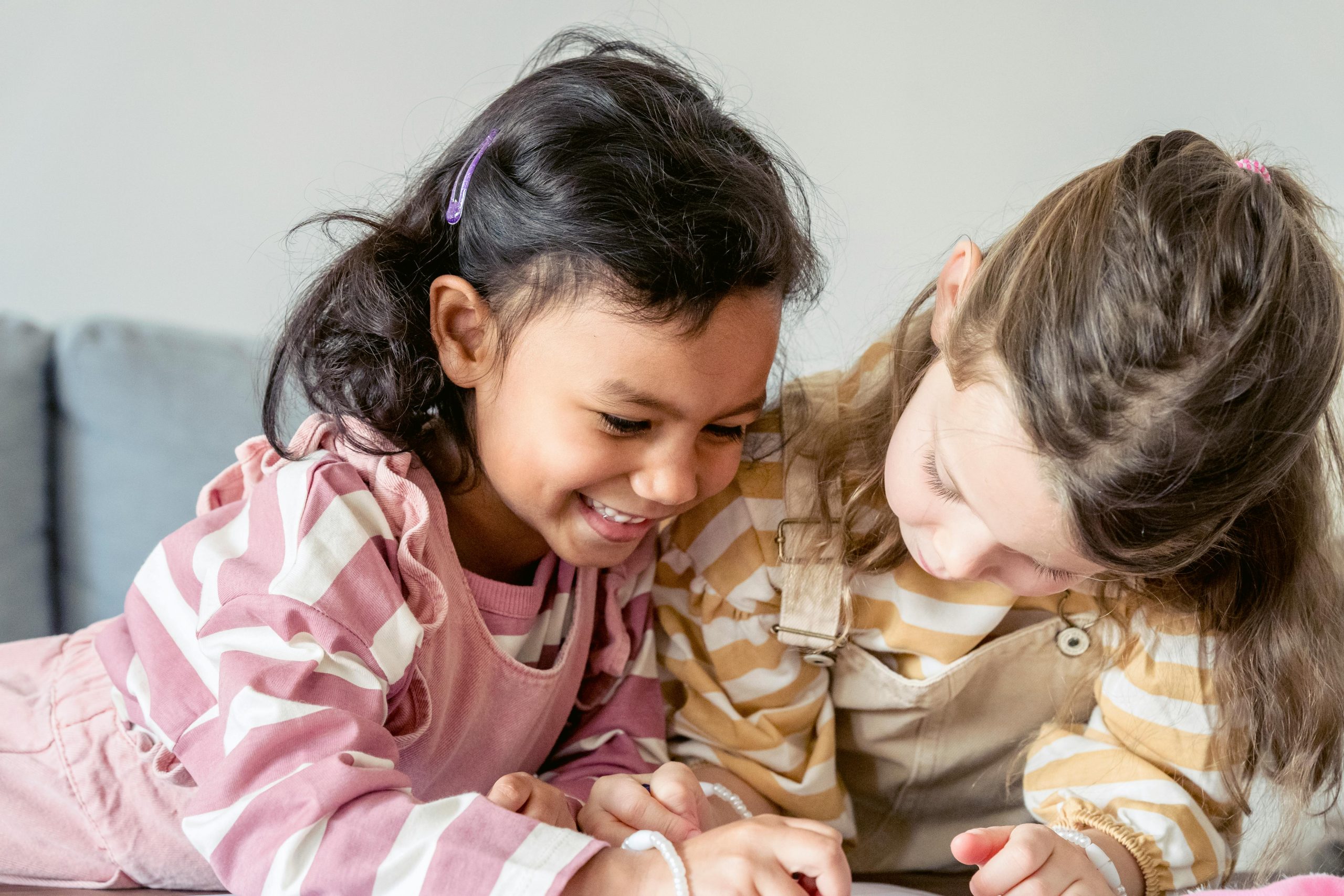Gender Diversity Overview

Gender diversity recognizes that gender is not limited to the binary of male and female but rather consists of a range of identities that defy conventional classifications. Acknowledging the multiplicity of genders in children is essential because it creates an atmosphere of tolerance and comprehension from an early age. There are currently major changes taking place in society and culture that are leading to a greater understanding of gender diversity. This change is crucial because it promotes inclusivity and supports everyone’s wellbeing, regardless of gender identification. We create the foundation for a future generation that is more understanding and accepting of variety by embracing it.
Understanding and Assisting Children of Diverse Genders

Identifying Gender Variations in Kids
- Youngsters who are figuring out who they are may show indicators that are just as varied as gender. They may show a clear preference for items of clothing, toys, or hobbies that are often associated with the other gender.
- Certain youngsters demand to be addressed using names or pronouns other than the ones that were given to them at birth. Every child’s journey of self-discovery is different on this one.
The continuity, coherence, and insistency of these identities and manifestations sets them apart from gender variation and gender exploration. While many kids experiment with multiple gender roles at different stages of development, people who identify as diversely gendered continuously identify for an extended length of time with a gender other than the sex they were assigned at birth. This is a deep grasp of who they are, not just a phase.
- Toddlers can use play and fashion choices to start expressing their gender preferences.
- When adolescents get to school age, they are better able to express their gender identification, which may or may not conform to social norms.
- While navigating the intricacies of puberty, adolescents frequently look for a more profound comprehension and acceptance of their gender identity.
Every developmental stage has its own set of obstacles and insights, underscoring the significance of nurturing surroundings that validate a child’s uniqueness and self-discovery.
Recognizing indicators or differences is not enough to understand and help children who are gender diverse. It all comes down to providing a supportive atmosphere that values and honors each child’s path toward discovering their gender identity. By doing this, we assist the development of an inclusive society that celebrates diversity and looks out for the welfare of all of its members.
The Environment’s Effect on Children of Diverse Genders

The way a child is raised has a significant impact on how well they comprehend and embrace their gender identity. Community, school, and family are the main settings for this self-discovery and investigation.
- Family: Children can freely express their gender identification without fear of rejection or judgment when they grow up in a supportive home setting that fosters acceptance and open communication.
- Education: essential to creating an inclusive environment through policy, instruction, and peer relationships that acknowledge and value gender diversity.
- Communities: that promote variety foster a more accepting society, which helps youngsters of different gender identities feel appreciated and understood.
The way society views gender diversity can have a significant effect on children. A sense of belonging is fostered and self-esteem and mental health are reinforced by positive reinforcement and acceptance from society. On the other hand, unfavorable opinions and prejudice can cause loneliness, worry, and sadness, which can impede a child’s growth as a whole. It is impossible to overestimate the value of encouraging surroundings. Children of different genders need them for a healthy growth that will allow them to flourish socially and emotionally.
All societal segments must work to create such settings. It entails spreading awareness among ourselves and others, opposing gender stereotypes, and fighting for laws that uphold and assist people of all gender identities. Materials such as the This is the Australian Psychological Society. provide insightful knowledge about appreciating and embracing gender diversity. Similar to this, the Guidelines on rights and protections for people of different gender identities are provided by the Australian Human Rights Commission. We can help create a society that is more accepting and helpful to youngsters of different gender identities by utilizing these tools.
Overcoming Obstacles and Barriers

Children from varied gender backgrounds and their families frequently confront particular difficulties. Sadly, bullying, prejudice, and exclusion are frequent occurrences. A child’s mental and emotional health can be severely impacted by these unfavorable interactions, which can happen at playgrounds, schools, and even within families. It is imperative to confront these problems head-on and create supportive and understanding surroundings.
Children of different gender identities also have to deal with a lot of legal and medical issues. It might be difficult to navigate the healthcare system and obtain care that is gender affirming. Another level of intricacy is added by legal obstacles, such as changing names or gender markers on official papers. Even though they can be difficult, these procedures are essential to a child’s identity affirmation.
Overcoming these obstacles calls for a diversified strategy. The key is education. Gaining knowledge about gender diversity for ourselves, our communities, and institutions can help create a more welcoming and inclusive environment. Advocacy holds equal significance. One of the most effective ways to support children from varied gender backgrounds is to speak out against bullying and prejudice and to advocate for inclusive policies in schools and healthcare settings. Last but not least, building a solid network of allies, family, and friends can give these kids the emotional support they require to flourish.
We can ensure that gender varied children and their families navigate their journeys with confidence and support by acknowledging and addressing these obstacles. It’s about creating a society that values diversity in all of its manifestations and not just acknowledges it.
Resources and Assistance for Families

A multitude of tools and support networks are available to assist families in guiding and bolstering their efforts when navigating the process of raising a kid who is gender diverse. Gender diversity-focused professional associations and support groups provide priceless venues for networking, experience sharing, and education. These organizations offer practical guidance on advocating for gender variant children in a variety of contexts in addition to emotional assistance.
- In order to provide parents, siblings, and other family members with the knowledge necessary to comprehend and validate a child’s gender identification, educational resources are essential. There are many websites, publications, and courses that provide information about gender diversity, supportive parenting techniques, and methods for creating inclusive environments both within and outside the family.
- It is critical that children have access to care and support that is gender affirming. This entails locating medical professionals qualified to handle the unique requirements of young people who identify as gender non-conforming. Numerous groups provide lists of healthcare providers who support gender equality as well as guidance on dealing with legal and medical issues. Families may make sure their children receive the attention and assistance they require to flourish by making use of these resources.
When used in tandem, these resources and networks provide a strong support system that enables families to foster loving settings that value and celebrate gender difference. Accepting this help enhances the family unit with greater empathy and understanding while also promoting the personal development and wellbeing of children of varied genders.
In Conclusion
Diversity in gender enriches society. It makes kids happier and more resilient. The process of comprehending and assisting children who are gender different involves striking a balance between difficulties and significant benefits, necessitating a nurturing atmosphere that honors each individual identity. This essay emphasizes how crucial it is to create inclusive environments where children of different gender identities can flourish through advocacy, education, and community support. Let us move forward with compassion and devotion, safeguarding every child’s right to authenticity and happiness.
Understanding and Supporting Gender Diverse Children FAQs
While some children may explore different gender identities as part of their development, for many gender diverse individuals, their gender identity is a core aspect of who they are and not a phase. It’s important to take a child’s expression of their gender identity seriously and support them, regardless of whether their gender identity changes over time. Dismissing a child’s gender diversity as a phase can be harmful and invalidate their experiences and feelings.
Healthcare providers can support gender diverse children by offering affirming care, respecting their gender identity, and providing access to gender-affirming treatments if needed and appropriate. This includes using the child’s chosen name and pronouns, providing education about gender diversity, and connecting families with resources and support. Providers should also be knowledgeable about the physical and mental health needs of gender diverse children.
Supporting a gender diverse child involves listening to them, affirming their gender identity, and advocating for their needs. It’s important to educate yourself about gender diversity, use the names and pronouns that your child identifies with, and seek out supportive communities and resources. Creating a safe and accepting environment at home is crucial for their well-being.
Schools can support gender diverse students by implementing inclusive policies, providing gender-neutral facilities, and fostering a safe and supportive environment. Training for staff on gender diversity and sensitivity is crucial, as is the inclusion of gender diversity in the curriculum. Schools should also support the use of chosen names and pronouns, and protect students from bullying and discrimination.
Talking to your child about gender identity should be an open, honest, and supportive conversation. Start by educating yourself on gender diversity and use age-appropriate language to explain it. Encourage questions, listen to their thoughts and feelings, and reassure them that you love and support them no matter what.
Signs that a child might be gender diverse include consistently identifying with a gender different from their sex assigned at birth, preferring toys or activities typically associated with another gender, or expressing discomfort with their gender or body. These signs can vary widely among children and may not be the same for everyone. It’s important to approach these expressions with openness and without assumptions.
Gender diversity refers to the idea that there are many different genders beyond just male and female. This concept acknowledges the wide range of gender identities and expressions that exist, including non-binary, genderqueer, and transgender identities. Understanding gender diversity helps in recognizing and respecting each individual’s unique gender experience.
Legal protections for gender diverse children vary by location but may include laws against discrimination in schools, healthcare, and public accommodations. Some jurisdictions have laws that specifically protect the rights of transgender and gender diverse individuals. It’s important to research local and national laws to understand the protections available in your area.
There are many resources available for gender diverse children and their families, including support groups, counseling services, educational materials, and online communities. Organizations such as the Gender Spectrum and PFLAG offer valuable information and support networks. These resources can provide guidance, support, and a sense of community for both children and their families.
Mental health professionals play a critical role in supporting gender diverse children by offering counseling services that affirm their gender identity and address any challenges related to their gender diversity. They can provide a safe space for children to explore their feelings and identities, offer strategies for coping with discrimination or bullying, and support families in navigating these experiences. Collaboration with other professionals and referral to specialized services when necessary is also part of their supportive role.

Jasmine Duque-Love is a mother of one and a practicing physiotherapist with a Phd in Physiotherapy

